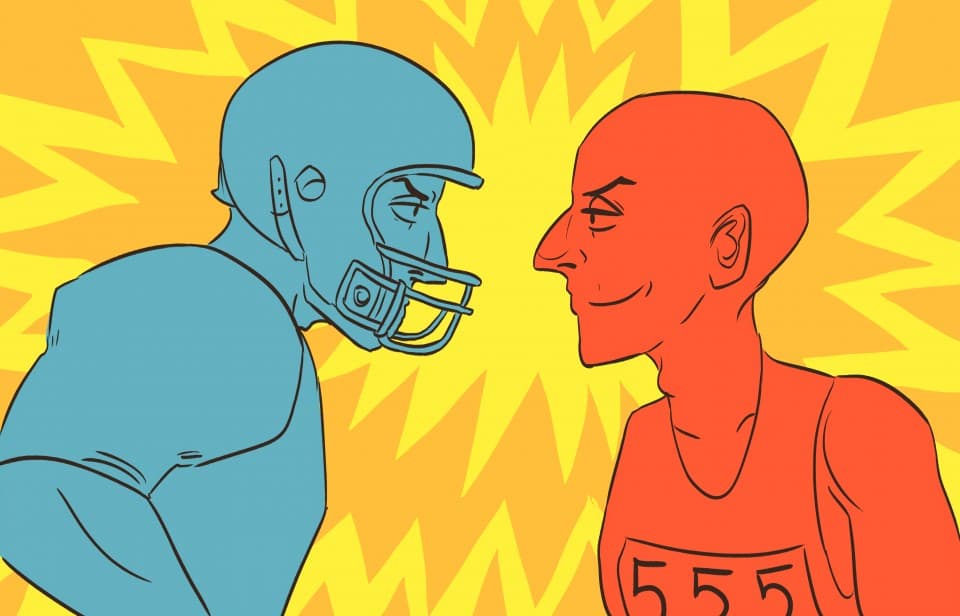Despite the fact that the first recorded ancient Olympic games were held in 776 BC, it is not hard to infer that non-recorded athletics were taking place long before the first games, or that organized sport has been an integral part of everyday life for the better part of the past two millennia.
The events incorporated into the roster for the ancient Greeks were limited to running events — like the modern day marathon — individual track events, wrestling, boxing, equestrian, javelin, discus, or jumping events, which all perpetuate the theme that the first Olympic games were a series of purely individualistic competitions.
Sports have evolved drastically since 776 BC. The summer and winter Olympic games now incorporate over 30 sports and more than 300 events, many of which are not individual in nature, but rely on a team of players to execute. Not only have more sports been created, but there has also been a complete cultural shift in the types of activities we popularize and watch on a daily basis — the vast majority of which are team sports.
The first team sport added to the Olympic roster was water polo in the 1900, rugby and European football following soon followed suit. In comparison to individual sports, team sports remain relatively new in terms of their creation and their induction to the Olympic roster. European football was created in the mid-1900s, American football was created in 1869, basketball in 1891, and baseball in 1839. The list most recently incorporated electronic and motor team sports. The point of this data is that individual sports have been around almost since the beginning of recorded history, and team sports are a fairly recent phenomena.
The mechanics, variations, and revisions of individual sports have been worked on for thousands of years to make the sport as efficient as possible, while modern sports are still consistently undergoing minor changes and adjustments to improve.
The dynamics of belonging to an individual sport versus a team sport differ immensely for athletes and coaches. If an athlete makes a bad serve in tennis, a terrible drive in golf, or a false start in the 100-metre, the athlete has no one else to blame but themselves.
“In team sports, although the individual is important they can be subbed out or replaced, albeit not easily,” said near and middle eastern Civilizations specialist Moska Rokay regarding the importance of individuals within team sports. Rokay, who played volleyball for six years, also believes that, although performing well as an individual within a team can pack on the pressure, competing in an individual sport increases that pressure tenfold.
“In individual sports you’re alone and the responsibility is solely on you,” said Rokay, “everything is on you to do your best and take care of your health all the time because you can’t be replaced.”
When an individual-sport athlete is training, or in practice, they have to be completely focused and zoned in far more than a member of a team sport has to be — this can even affect the way injuries are treated. “It may be a harsh way to look at it but if an individual isn’t performing… it reflect[s] in the way the team plays… in a team everyone has a role.” Said Rokay, about the importance of individual performances within a team and the ability for members of a team to be subbed or replaced.
Injuries, although able to impact an individual athlete’s personal performance, can adversely affect the dynamic of an entire winning team as well as the psyche of the individual player. After sustaining a wrist injury one season, Rokay was forced to sit out from competition after playing through the pain became unbearable. “Someone had to be subbed for me,” said Rokay, adding that it wasn’t much consolation to her or the team, “I was usually a starting player… if [my sub] didn’t do well, I felt responsible.”
Although, traditionally and historically, athletes have been competing by and for themselves, the twenty-first century shift to focusing on the team has revolutionized not only individual-sport athletes, but also individual players within teams themselves — which gives cause to the question: is there actually room for ‘I’ in team?


